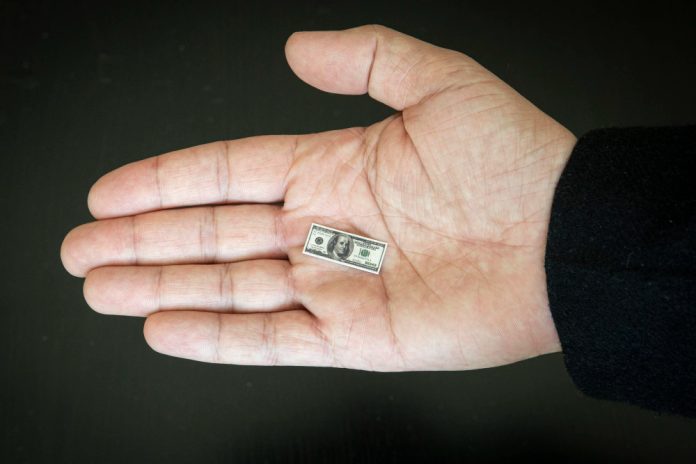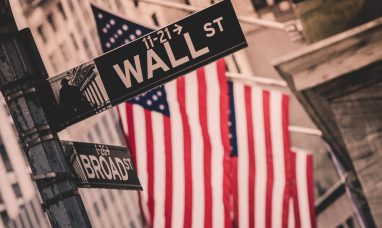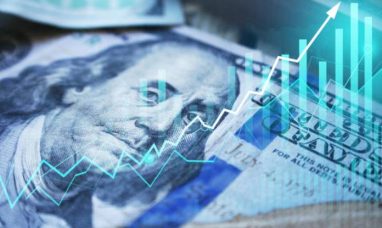The inflation measure preferred by the Federal Reserve rose in January, suggesting that the slowdown in U.S. consumer price increases is not consistent from month to month.
According to the government’s report on Thursday, prices increased by 0.3% from December to January, up from 0.1% in the previous month. However, the year-over-year increase was just 2.4%, down from 2.6% in December and the smallest annual increase in nearly three years.
While the decline in inflation is likely to be welcomed by the White House as President Joe Biden seeks re-election, many Americans are still frustrated by the fact that overall prices remain significantly higher than they were before inflation surged three years ago. This sentiment, reflected in various public opinion polls, could pose a challenge to Biden’s re-election prospects.
The increase in prices in January is likely to reinforce the Federal Reserve’s recent concerns about the risk of cutting interest rates too soon this year. Minutes from the Fed’s January meeting showed that most policymakers were cautious about reducing rates prematurely, before inflation had returned sustainably to the Fed’s 2% target.
Omair Sharif, founder of Inflation Insights, commented, “Thursday’s figures very much explain why they were right to be cautious. They continue to want to get more confidence.”
Excluding volatile food and energy costs, core prices rose by 0.4% from December to January, the biggest increase in a year. Compared to a year earlier, core prices rose by 2.8%, slightly down from 2.9% in December. Economists consider core prices a better indicator of future inflation.
Despite January’s increase, core inflation had seen three months of very low readings previously. In the second half of last year, core prices had risen at just a 1.9% annual rate.
The Fed has welcomed the long-term decline in inflation and continues to signal that it will likely cut its benchmark interest rate multiple times this year. Most economists expect the first rate reduction to occur in May or June.
One factor helping to keep a lid on price increases is consumer pushback against high prices, particularly for packaged foods, cars, and other goods. Companies like PepsiCo, McDonald’s, and General Mills have indicated that they are slowing price increases for their products after steeper hikes resulted in lower sales volumes.
Shannon LoConte, a consumer, stopped buying name-brand potato chips once their price approached $7 a bag. She also reduced her consumption of Vanilla Coke due to high prices, opting instead to buy groceries or make her own snacks.
Inflation, as measured by the Fed’s preferred gauge, peaked at 7.1% in the summer of 2022 before falling last year. Supply chain disruptions eased, reducing costs of parts and raw materials, while a steady flow of job seekers made it easier for employers to limit wage increases, a key driver of inflation. Nonetheless, inflation remains above the central bank’s 2% annual target.
Since March 2022, the Fed has raised its benchmark rate 11 times to combat high inflation. These rate hikes have cooled inflation but have also made borrowing more expensive for consumers and businesses, particularly affecting the homebuying sector. Conversely, rate cuts by the Fed, whenever they occur, would lead to lower borrowing costs across the economy.
Higher costs for services such as hotels, health care, and restaurant meals contributed to the increase in inflation from December to January. For example, hospital services have become more expensive due to higher labor costs for health care workers. This trend is evident in other service industries as well, making inflation more persistent for services than for goods.
One positive aspect of Thursday’s report was a 1% increase in incomes from December to January, driven by a 3.2% cost-of-living increase in Social Security and other government benefits. However, consumer spending only rose by 0.2%, leading to slightly higher savings for Americans.
Analysts expect prices to settle back to a milder pace of increase by early spring, following the typical pattern of price changes in the first two months of the year.
Thursday’s inflation data is consistent with earlier figures that showed a faster rise in the government’s more widely followed consumer price index in January. The Fed prefers the measure reported on Thursday because it accounts for changes in consumer behavior when inflation rises, such as shifting to cheaper store brands.
While some Fed officials remain optimistic that inflation will fall back toward the Fed’s target, most economists expect a gradual slowdown in inflation in the coming months. Goldman Sachs economists project that core inflation, as measured by the Fed’s preferred gauge, will drop to 2.2% by May, low enough for the Fed to initiate rate cuts in June.
Featured Image: Freepik

















